#augusta mangusta
Photo

Augusta A-129 Mangusta (Mongoose) In Action https://www.instagram.com/p/CkvXMpxLvdj29TmwZACqOryHPIIPV-lrVo3jaU0/?igshid=NGJjMDIxMWI=
0 notes
Text
FLIGHTLINE: 207 - AGUSTA A129 MANGUSTA
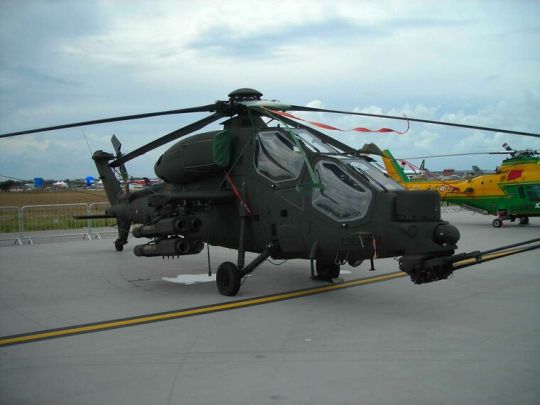
-An Agusta A129 Mangusta at the "Giornata Azzurra" 2006 (Italian Air Force airshow) at Pratica di Mare AFB, Italy. | Photo: SCDBob
The first attack helicopter to be developed in Europe, the Mangusta has been in service with the Italian Army since 1990.
HISTORY
Beginning in 1972 , the Italian Army began formulating requirements for a light observation and anti-tank helicopter, with defense contractor Agusta forming a temporary collaboration with West German firm MBB, as the Bundeswehr was also looking at potential attack helicopters. Although this joint effort was short-lived, by 1978 Agusta had begun design work on the A129, a dedicated attack helicopter.
DESIGN

-Orthograph of the A129 Mangusta. | Illustration: Dr. Dan Saranga
The A129 shares similar design with other attack/anti-tank helicopters, including a narrow fuselage with the weapons operator and pilot seated in tandem at the front, a single main rotor, vertical tail, horizontal stabilizer and tail rotor, two turboshaft engines housed in pods, two stub wings with pylons for weapons, and tricycle undercarriage. The four-bladed main rotor (replaced by a five-bladed unit later on) is fabricated from reinforced fiberglass, and is rated for ballistic resistance from 12.7mm rounds, and is tolerance against 23mm ammunition. Similarly, the canopy and portions of the fuselage (also fabricated from composite materials) are armored against 12.7mm hits, and is reinforced to provide crash protection. The rotors are fully articulated, and the transmission system is capable of running without lubrication for a short time. The A129 features a fully-integrated digital management system, which is capable of automatically controlling communication, navigation, engine, armament, power distribution system, reducing workload of the pilot and weapons officer.
SPECIFICATIONS
The A129 is 12.28 meters long, and stands 3.35 meters high, with the main rotor having a diameter of 11.9 meters. The helicopter weighs 2,530kg empty, and MTOW is 4,600kg. Two Rolls-Royce Gem 2-1004D turboshafts, built under license by Piaggio, are rated at 664kW each, driving the A129 to a cruise speed of 229kmh and a maximum speed of 278kmh. Service ceiling is 4,725 meters, and max rate of climb is 10m/s. Combat range is 510km, while a ferry range of 1,000km is possible with external tanks. The prototypes and first version supplied to the Italian Army did not have a gun turret, but a M197 20mm Gatling gun was introduced on the A129 International export model, which was then added to the A129CBT and later versions. The stub wings can mount a mix of 12.7mm gun pods, pods of either thirty-eight 81mm Medusa or seventy-six 70mm Hydra unguided rockets, up to two quad racks of AGM-114 Hellfire (introduced on the A129 International), BGM-71 TOW or Spike-ER (added on the A129D) anti-tank missiles, or four octuple racks of FIM-92 Stinger or Mistral IR-guided anti-aircraft missiles.
TESTING, PRODUCTION AND DEVELOPMENT
The first A129, given the nickname Mangusta (Mongoose), took its maiden flight on 11 September 1983, by March 1986 the fifth prototype had taken flight. The same year, the Italian Army signed a contract for 60 production Mangusta, with delivery expected to begin around 1990. As initially delivered, the A129 for the Italian Army lacked a gun, and were equipped with a laser designator/low-light TV sensor in the nose, along with a second pilot's night vision sensor in a mounting above it, similar to the AH-64 Apache.

-Prototype A129 as seen at the 1984 Farnborough Air Show. | Photo: Mike Freer - Touchdown-aviation
Agusta also offered the A129 internationally, with the upgraded A129I International being developed. The A129I introduced the five-bladed main rotor later refitted to the older models, as wells as a gun turret, compatibility with a wider array of weapons, upgraded avionics and electronics warfare suite, and uprated LHTEC T800 engines mated to a new transmission. Competition from the American AH-64 limited sales of the Mangusta, however, with countries like the Netherlands and Australia acquiring the Apache instead. Separately, Italy, the Netherlands, Spain and the UK signed a memorandum of understanding in 1986 to develop the A129 into the Joint European Helicopter Tonal, or Light Attack Helicopter (LAH). The LAH would feature upgraded sensors, more powerful weapons, a new rotor and retractable landing gear. The Tonal was canceled in 1990 however, as the Netherlands and UK both purchased AH-64s instead. Other proposed modifications of the Mangusta included the A129 LBH, or Light Battlefield Helicopter, which would have had a new fuselage which would allow for up to eight troops to be carried (similar to the Mi-24 Hind), the A129 Multi-Role, a less complex scout model, and a naval model known as Shipboard which would have replaced the electro-optical sensors with a radar and mounted anti-ship missiles.
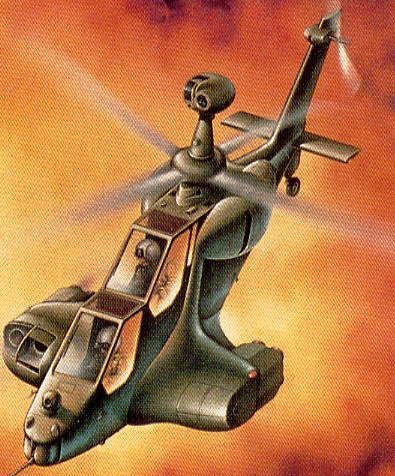
-Concept art of the A129 Tonal. | Illustration: Agusta

-Mockup of the LBH concept. | Photo: Augusta
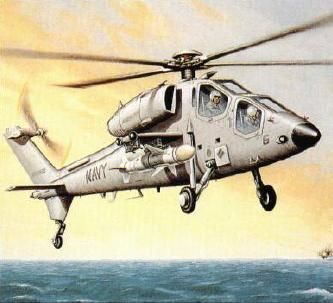
-Concept art of Shipboard. | Illustration: Agusta
UPGRADES AND EXPORTS
In 1999 the Italian Army signed a contract Augusta (now merged with Westland) for 15 new-build A129CBT helicopters, which are based on the A129I but with the Gem 2 engines. The CBT (also known as the A129C) lacks the Hellfire compatibility of the International model, but can be fitted with Stinger missiles and external tanks. Beginning in 2001 the original 45 A129 were also being updated to A129C standards. In 2011 Italy began receiving the first of 24 new A129D model helicopters. The A129D, also known as the ARH-129D, has updated avionics, including replacement of the SAAB HeliTow sights with a Rafael Toplite III sight, which includes FLIR capability along with both manual and automatic target tracking. The Toplite III also allows the Mangusta to fire Spike-ER anti-tank missiles, replacing the TOW system. The D model also replaced the cockpit displays with new MFDs, and included updates to the electronics warfare suite, added the SIAP (Single Integrated Air Picture) self-protection suite, and opened the door to compatibility with future UCAVs. Thirty-two of the original A129C choppers are also being upgraded to A129D standards.
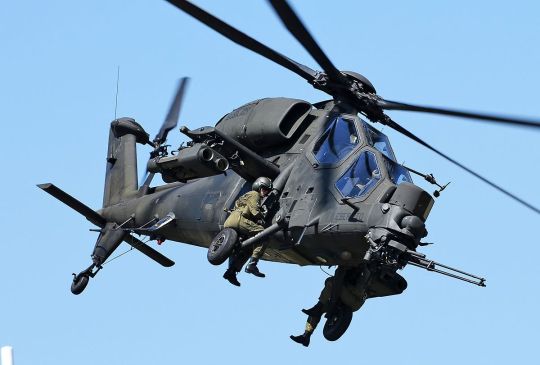
-An upgraded A129CBT in flight, with two passengers riding on the main landing gear, | Photo: Aldo Bidini
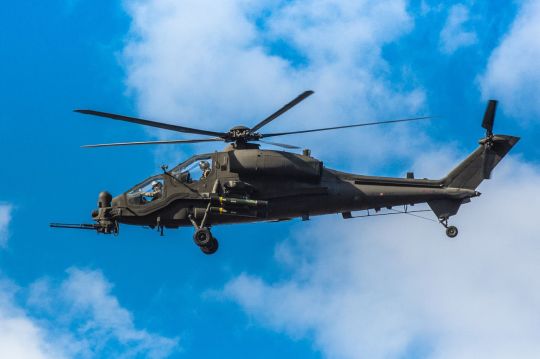
-One of the newly upgraded A129D in 2016. | Photo: Italian Army
Italian Mangusta have been deployed on several UN missions in nations such as the Republic of Macedonia, Somalia and Angola. The type was found to be quite adept at peacekeeping, and were found to be quite reliable in desert climates during their deployment to Somalia. A129s were also sent to Iraq and Afghanistan between 2013 and 2016, with Mangustas providing air support for the Italian forces in Nassiriya, Iraq, being part of Task Force Fenice in Afghanistan, and the Kurdistan region of Iraq for both CSAR missions and to protect the Mosul Dam.
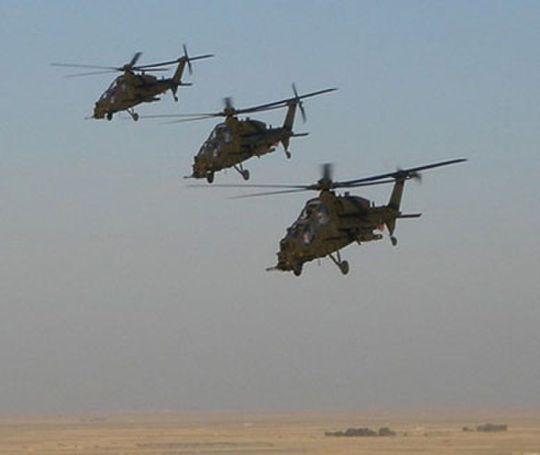
-Three Mangusta on patrol over Iraq. | Photo: Sito Ufficiale dell'Esercito Italiano
The sole successful export market for the Mangusta thus far is Turkey, who began searching for a replacement for their aging fleet of AH-1 Cobra and SuperCobra helicopters. The selection process was protracted, but in 2007 a contract was signed with AugustaWestland (now Leonardo) to co-develop and produce the T129ATAK, a modified variant of the Mangusta. The ATAK is tailored for hot and high environments, with advanced avionics and weapons systems. As part of the agreement with AgustaWestland, 95% of the ATAK's components are produced in Turkey, with Turkish Aerospace Industries (TAI) as the prime contractor. TAI gained the IP rights to the A129 as part of the agreement, with full control of development and marketing. As the LHTEC engines were subject to US restrictions on export, Turkey developed the TEI TS1400 as a replacement. The T129 ATAK can be used in the anti-armor, armed reconnaissance, ground attack, escort, asymmetrical, fire support and short range anti-aircraft roles, and is equipped with a 20 mm three-barrel rotary cannon in a nose turret (with 500 ammunitions capacity), and up to seventy-six 70mm Hydra rockets for close air support, up to 8 UMTAS anti-tank missiles, 16 CIRIT laser-guided 70mm missiles, or 8 Stingers. The ATAK is slightly longer (at 14.54 meters) than the A129, and somewhat heavier (5,056kg MTOW), along with being slightly slower at 281kmh max speed.
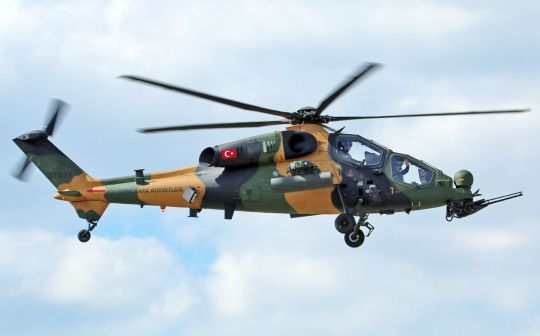
-A T129 ATAK in flight. | Photo: wiltshirespotter
The Turkish Army has received fifty-five T129s thus far, with forty-eight more under construction. Eighteen more have been ordered by the Turkish Gendarmerie (with 7 delivered to date), and 3 more are with the General Directorate of Security as test articles for further development. Due to delays with production, the first nine examples were T129A Erken Duhul Helikopteri ("Early Delivery Helicopter"), which lacked the guided missiles of the later T129B version. These A models will be upgraded to the B standards at a later date. In addition to Turkey, the Pakistani Army Aviation Corps has thirty T129Bs on order, and the Philippine Air Force has ordered six examples. Saudi Arabia, Brazil, Qatar, Iraq and Morocco have also expresses interest in acquiring the ATAK. In 2013 South Korea pitted the T129 against the AH-1Z Viper and AH-64E Apache, but in April of that year the Apache was selected.
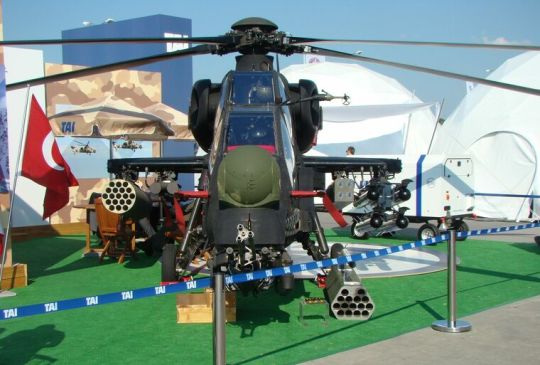
-TAI's ATAK display at the 2015 MSPO show. | Photo: Pibwl
#aircraft#Aviation#avgeek#helicopter#attack helicopter#antitank helicopter#agusta#augustawestland#leonardo defense#augusta a129 mangusta#augusta mangusta#augustawestland mangusta#tai t129 mangusta#tai atak#tai t129 atak#italytravel#italian army#turkey#turkish army#cold war#coldwar#cold war history#post cold war
37 notes
·
View notes
Photo

Caro Pd, non vuoi vendere armi alla Turchia? Applica la legge, senza scendere in piazza di Giulio Cavalli Forte il PD. Scende in piazza in difesa dei curdi per chiedere al governo (quindi al PD) di intervenire contro la Turchia in difesa dei curdi. In questo banalissimo gioco di annullare qualsiasi distanza tra popolo e istituzioni scendere per strada è visto come sintomo di vitalità politica, come se il partito a cui dovremmo affezionarci debba avere il pregio di essere come noi e non migliore di noi e con più strumenti a disposizione. Sulla vicenda dell'aggressione di Erdogan ai territori curdi (e badate bene che chiamarla "aggressione" dalle parti del sultano turco costa più o meno la galera) escono tutte le cinquanta sfumature di indignazione tipiche italiane: si convoca l'ambasciatore, si prepara qualche meme sui social, ci si dimentica volutamente degli errori passati, si inventa qualche hashtag funzionale, si fruga tr le foto che possano accendere empatia e si chiede sempre a altri di intervenire. Eppure per dare un segnale a Erdogan e alla sua irresponsabile violenza travestita da missione di pace basterebbe applicare la legge, sì sì la legge italiana, che dice chiaramente (legge 185/1990)«L'esportazione ed il transito di materiali di armamento sono altresì vietati verso i Paesi in stato di conflitto armato, in contrasto con i principi dell'articolo 51 della Carta delle Nazioni Unite, fatto salvo il rispetto degli obblighi internazionali dell'Italia o le diverse deliberazioni del Consiglio dei ministri, da adottare previo parere delle Camere». È già lì, bell'e scritta, pronta solo per essere usata. Usata come ha già fatto la Germania (la Germania che qualcuno continua a descrivere come sempre in bilico per non urtare i poteri forti), come ha fatto l'Olanda e come ha deciso la Norvegia. Sia chiaro: interrompere l'esportazione di armi non è certo la soluzione definitiva a un problema molto più ampio (che forse nasce con la folle idea dell'Europa di poter normalizzare Erdogan pur di fungere da tappo nell'immigrazione) ma sarebbe un primo concreto passo verso una presa di posizione che sia qualcosa di più di semplice sdegno social e su carta bollata. Sarebbe anche una risposta "di legge" a un atto violento, illegale e irrispettoso dei diritti umani: cosa c'è di meglio di poter agire coperti dalla legge? Appunto. Come dice chiaramente una nota di Rete Disarmo: "La Turchia è da molti anni uno dei maggiori clienti dell’industria bellica italiana e che le forze armate turche dispongono di diversi elicotteri T129 di fatto una licenza di coproduzione degli elicotteri italiani di AW129 Mangusta di Augusta Westland. “Negli ultimi quattro anni l’Italia ha autorizzato forniture militari per 890 milioni di euro e consegnato materiale di armamento per 463 milioni di euro” sottolinea Vignarca. In particolare nel 2018 sono state concesse 70 licenze di esportazione definitiva per un controvalore di oltre 360 milioni di euro. Tra i materiali autorizzati: armi o sistemi d’arma di calibro superiore ai 19.7mm, munizioni, bombe, siluri, arazzi, missili e accessori oltre ad apparecchiature per la direzione del tiro, aeromobili e software." E forse sarebbe anche più facile credere alla sincerità dello sdegno. No?
8 notes
·
View notes
Photo

Siria, la passione italiana di armare Ankara: “In 4 anni autorizzati 890 milioni di euro di forniture” di Michela Rubortone ...La Rete Italiana per il disarmo ha chiesto formalmente al ministro degli Esteri Luigi Di Maio “che vengano sospese con effetto immediato tutte le forniture di armamenti e sistemi militari verso il governo di Ankara, come prevede la legge 185 del 1990 che impedisce di inviare armi a Paesi in stato di conflitto armato”. La Turchia, da anni, compare nell’elenco dei maggiori clienti dell’industria bellica italiana, e le forze armate turche dispongono di diversi elicotteri T129, di fatto una licenza di coproduzione degli elicotteri italiani di AW129 Mangusta di Augusta Westland. “Negli ultimi quattro anni l’Italia ha autorizzato forniture militari per 890 milioni di euro e consegnato materiale di armamento per 463 milioni di euro” ha sottolineato il coordinatore Francesco Vignarca. In particolare nel 2018 sono state concesse 70 licenze di esportazione definitiva per un controvalore di oltre 360 milioni di euro. Le cifre si traducono in: armi o sistemi d’arma di calibro superiore ai 19.7mm, munizioni, bombe, siluri, arazzi, missili e accessori, apparecchiature per la direzione del tiro, aeromobili e software. Giorgio Beretta, analista sull’export di armi per la Rid, condanna l’incoerenza degli atteggiamenti italiani sulla questione siriana: “Non è accettabile che il nostro Paese, che ha attivamente sostenuto l’impegno delle popolazioni curde di contrasto all’Isis, continui a inviare sistemi militari alla Turchia che oggi intende occupare militarmente i territori curdi. È giunto il momento che anche il Parlamento faccia sentire la propria voce”.
6 notes
·
View notes